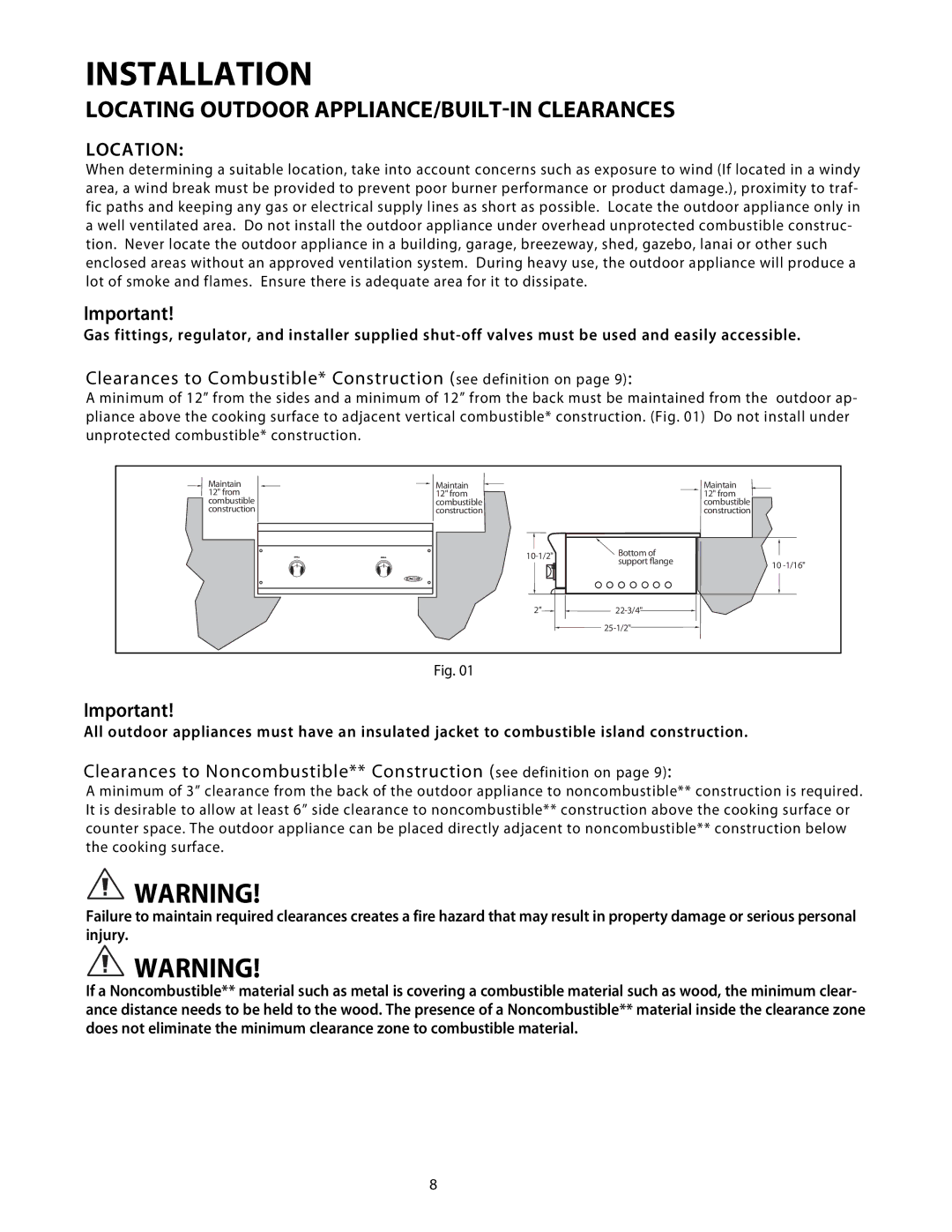
INSTALLATION
LOCATING OUTDOOR APPLIANCE/BUILT-IN CLEARANCES
LOCATION:
When determining a suitable location, take into account concerns such as exposure to wind (If located in a windy area, a wind break must be provided to prevent poor burner performance or product damage.), proximity to traf- fic paths and keeping any gas or electrical supply lines as short as possible. Locate the outdoor appliance only in a well ventilated area. Do not install the outdoor appliance under overhead unprotected combustible construc- tion. Never locate the outdoor appliance in a building, garage, breezeway, shed, gazebo, lanai or other such enclosed areas without an approved ventilation system. During heavy use, the outdoor appliance will produce a lot of smoke and flames. Ensure there is adequate area for it to dissipate.
Important!
Gas fittings, regulator, and installer supplied
Clearances to Combustible* Construction (see definition on page 9):
A minimum of 12” from the sides and a minimum of 12” from the back must be maintained from the outdoor ap- pliance above the cooking surface to adjacent vertical combustible* construction. (Fig. 01) Do not install under unprotected combustible* construction.
Maintain | Maintain |
| Maintain |
12" from | 12" from |
| 12" from |
combustible | combustible |
| combustible |
construction | construction |
| construction |
| Bottom of |
| |
| support flange | 10 | |
|
| ||
|
|
| |
| 2" |
| |
|
|
|
Fig. 01
Important!
All outdoor appliances must have an insulated jacket to combustible island construction.
Clearances to Noncombustible** Construction (see definition on page 9):
A minimum of 3” clearance from the back of the outdoor appliance to noncombustible** construction is required. It is desirable to allow at least 6” side clearance to noncombustible** construction above the cooking surface or counter space. The outdoor appliance can be placed directly adjacent to noncombustible** construction below the cooking surface.
![]() WARNING!
WARNING!
Failure to maintain required clearances creates a fire hazard that may result in property damage or serious personal injury.
![]() WARNING!
WARNING!
If a Noncombustible** material such as metal is covering a combustible material such as wood, the minimum clear- ance distance needs to be held to the wood. The presence of a Noncombustible** material inside the clearance zone does not eliminate the minimum clearance zone to combustible material.
8
